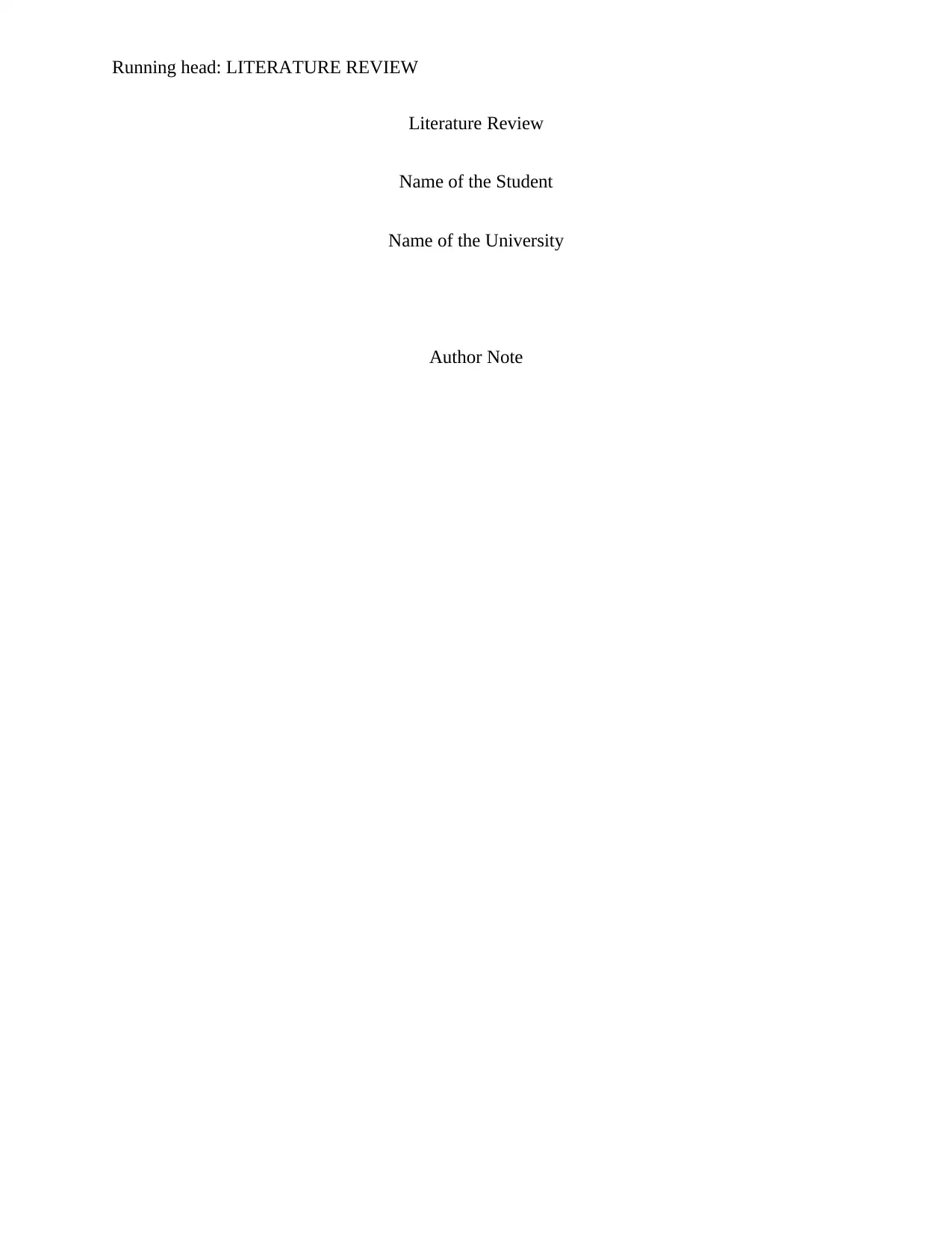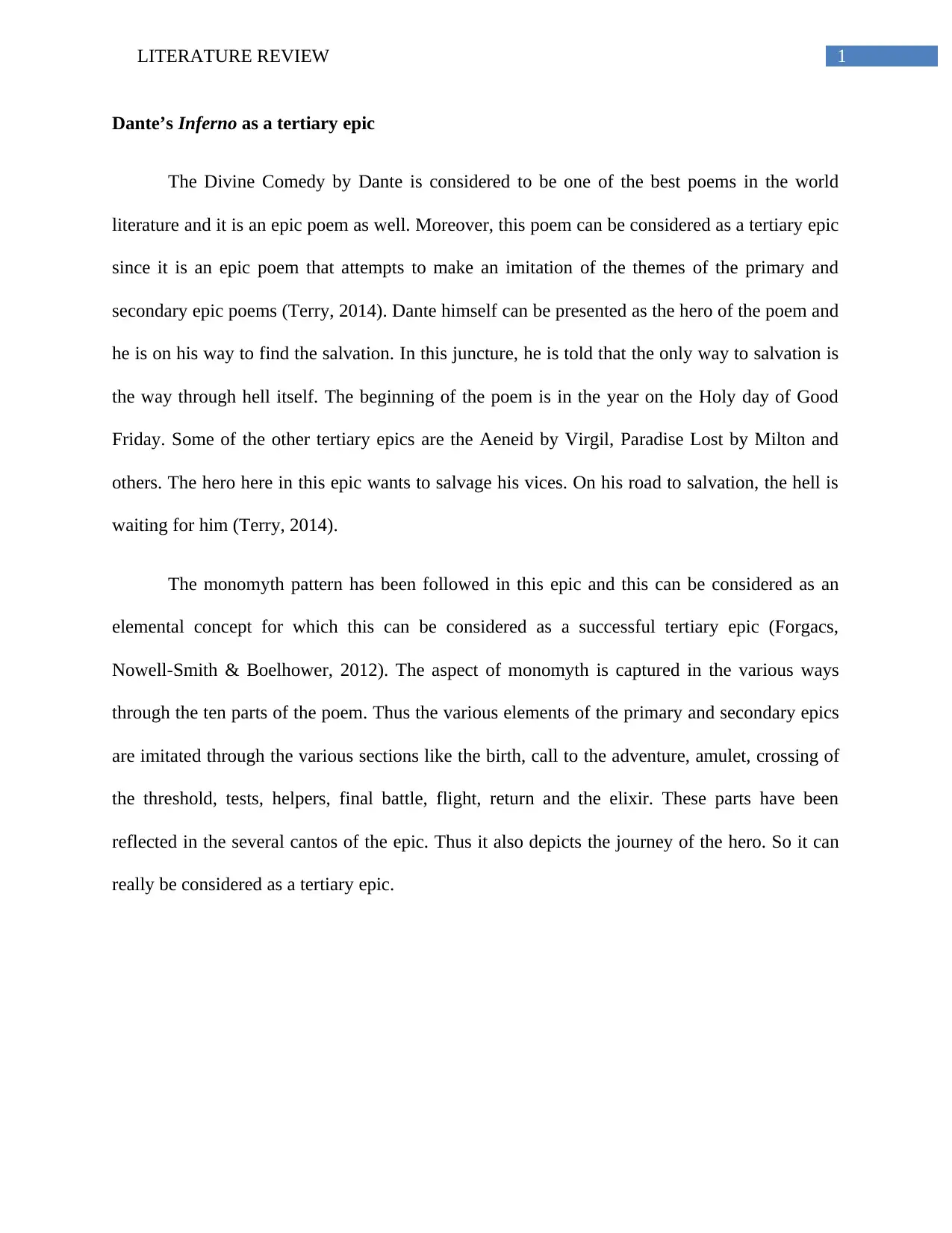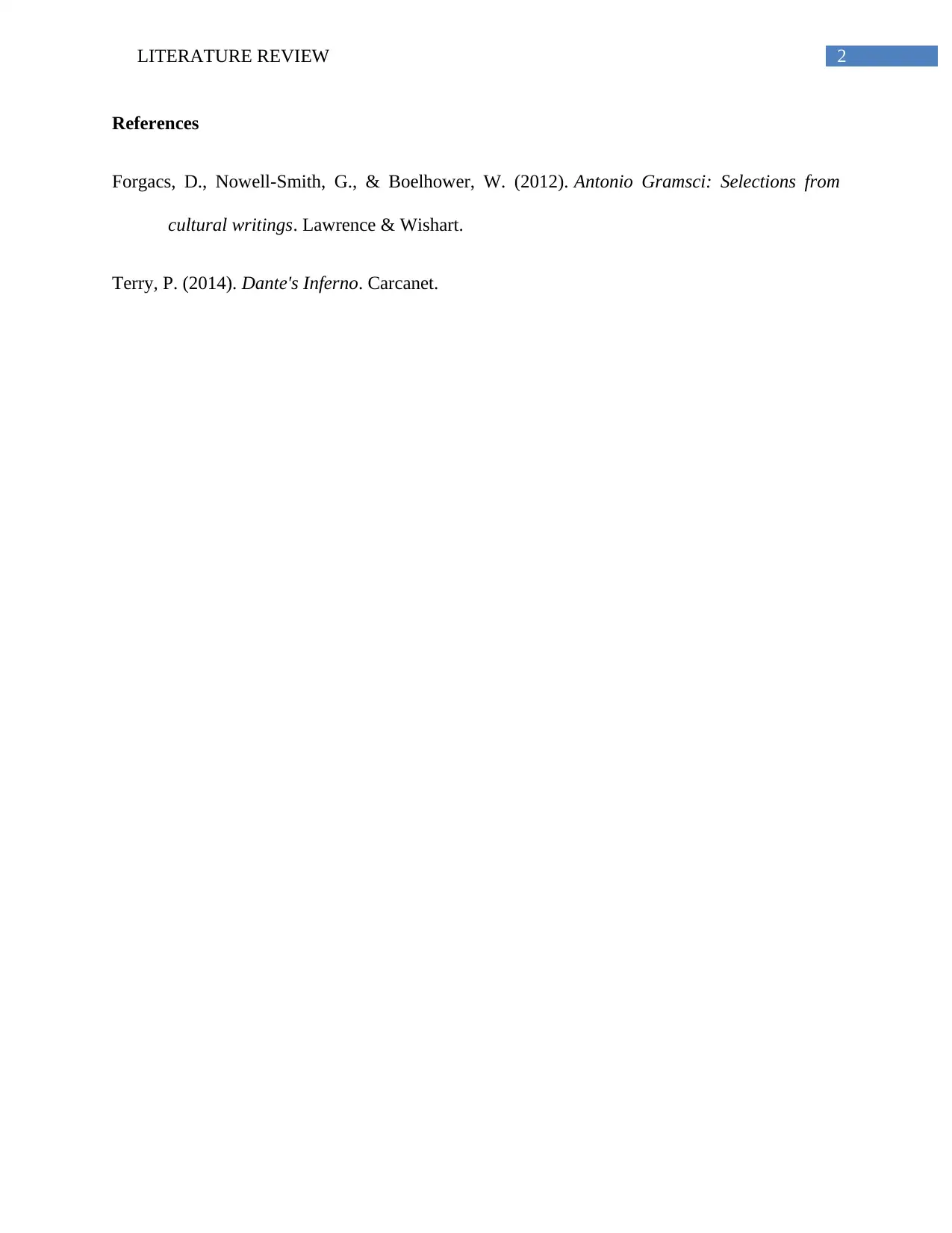Dante's Inferno: Examining the Tertiary Epic Structure
VerifiedAdded on 2021/10/06
|3
|381
|267
Literature Review
AI Summary
This literature review examines Dante's Inferno as a tertiary epic, focusing on its structure, themes, and the hero's journey. It highlights the poem's imitation of primary and secondary epic elements, particularly the monomyth pattern, which is reflected in the various stages of the hero's journey, including the call to adventure, tests, and final battle. The review references key works such as Forgacs, Nowell-Smith & Boelhower (2012) and Terry (2014) to support its analysis of the epic's characteristics and significance. The study emphasizes how Dante's Inferno incorporates these elements to create a compelling narrative centered around the hero's quest for salvation. The review concludes that Dante's Inferno effectively employs these elements, making it a successful tertiary epic.
1 out of 3




![[object Object]](/_next/static/media/star-bottom.7253800d.svg)